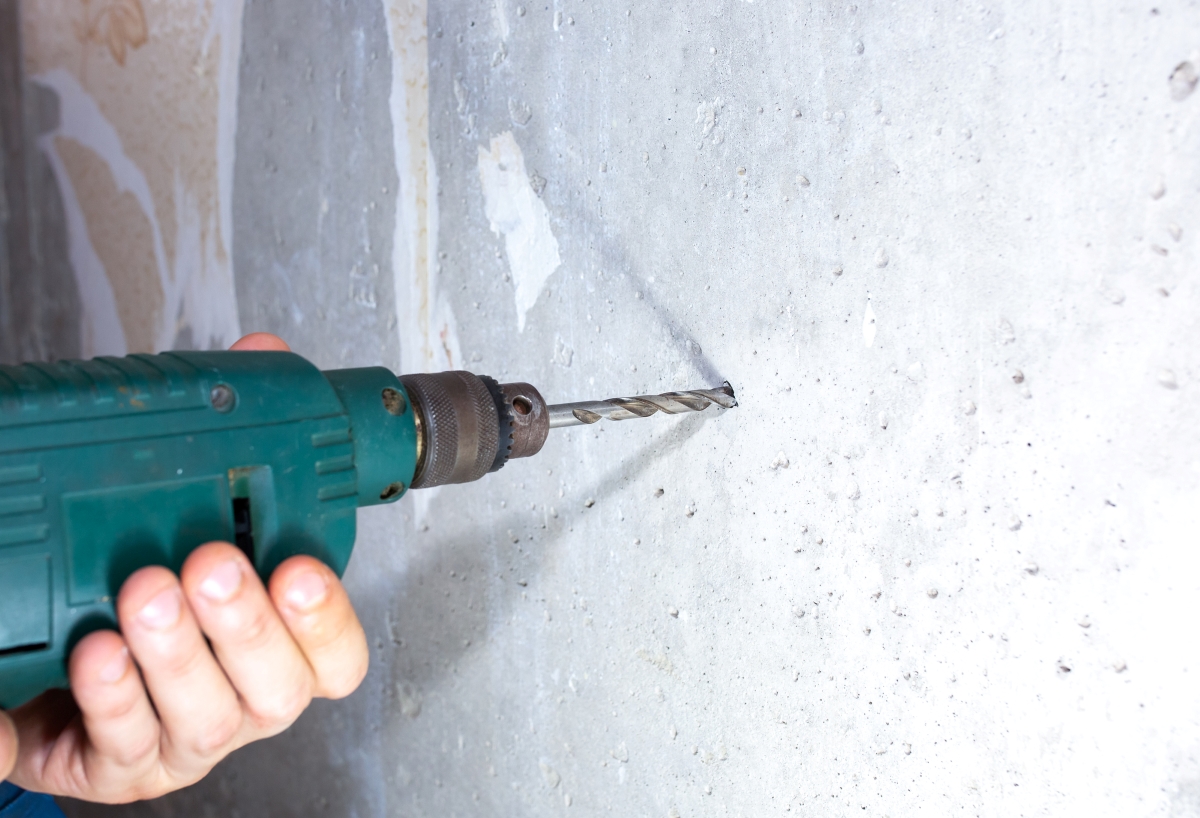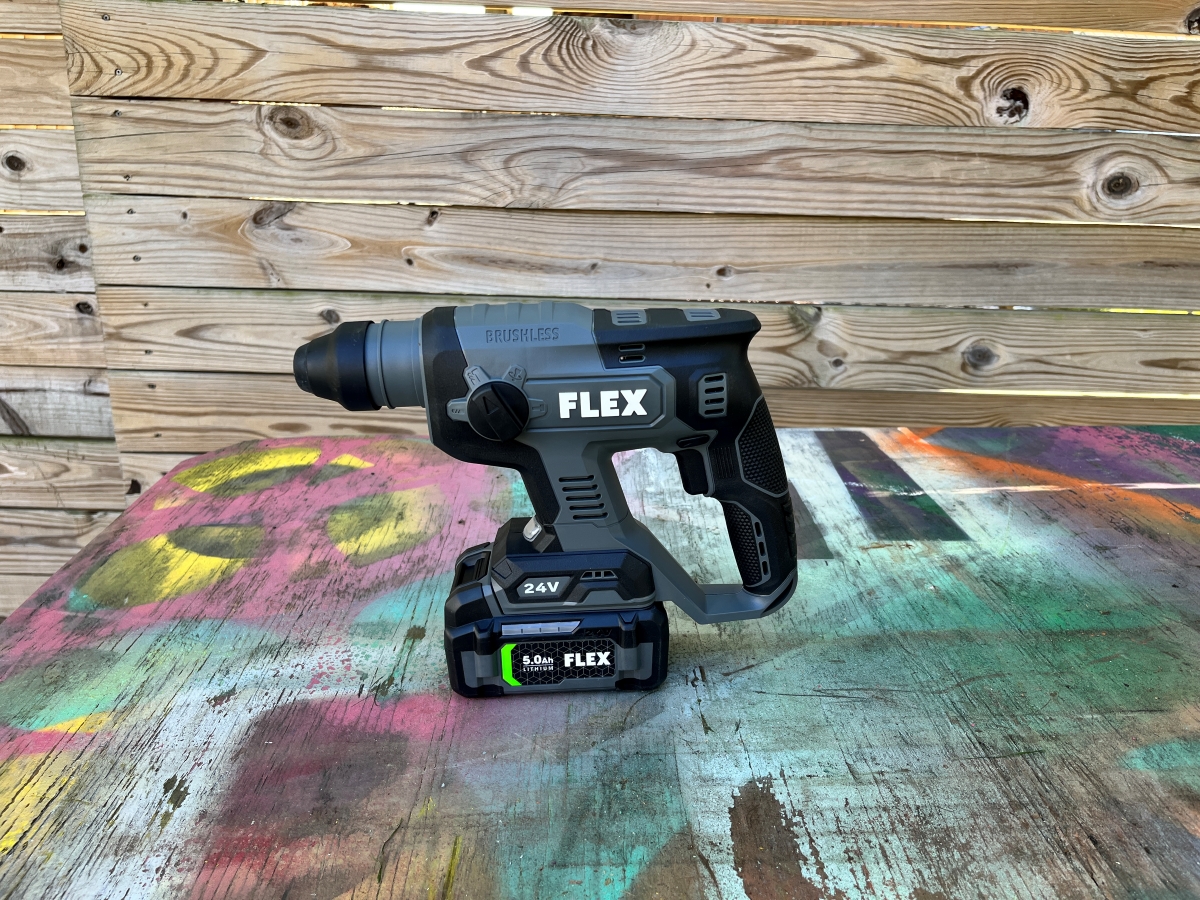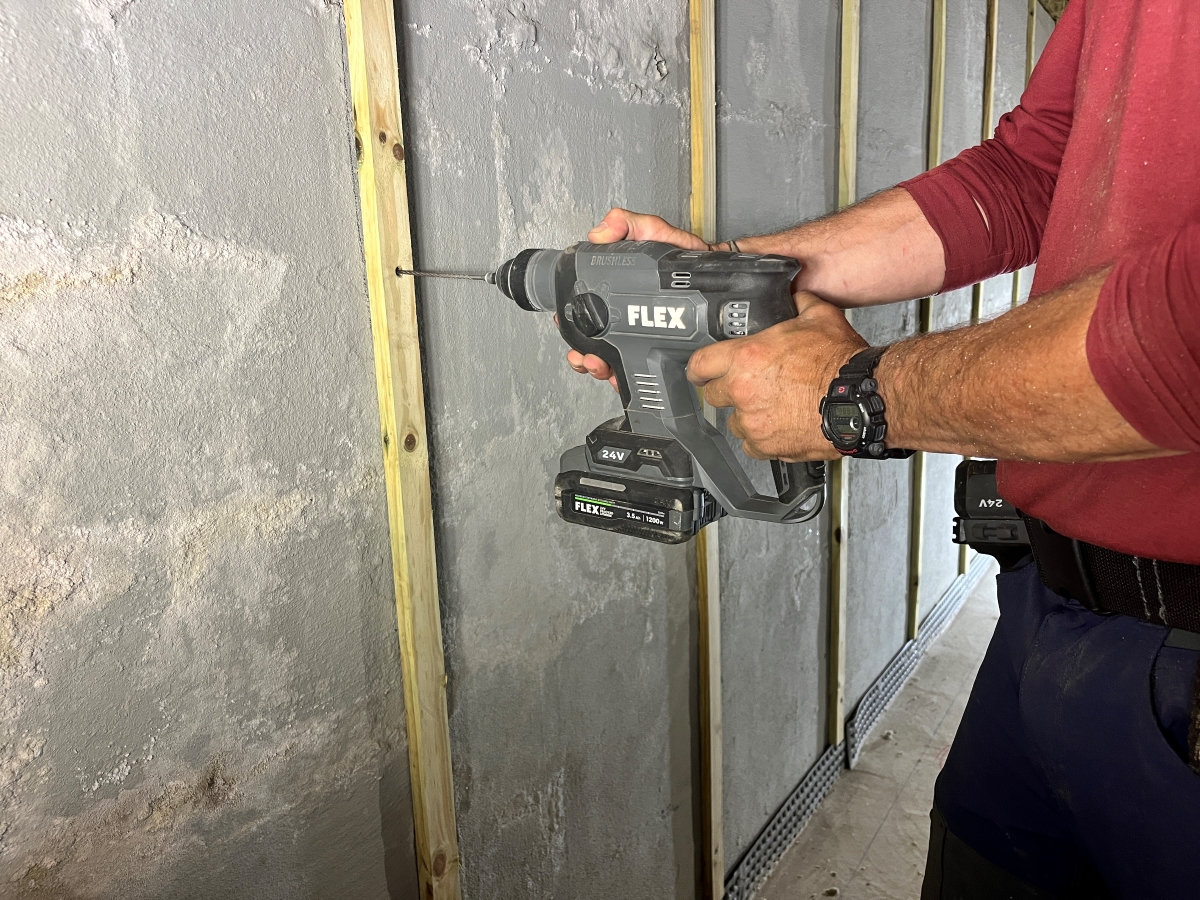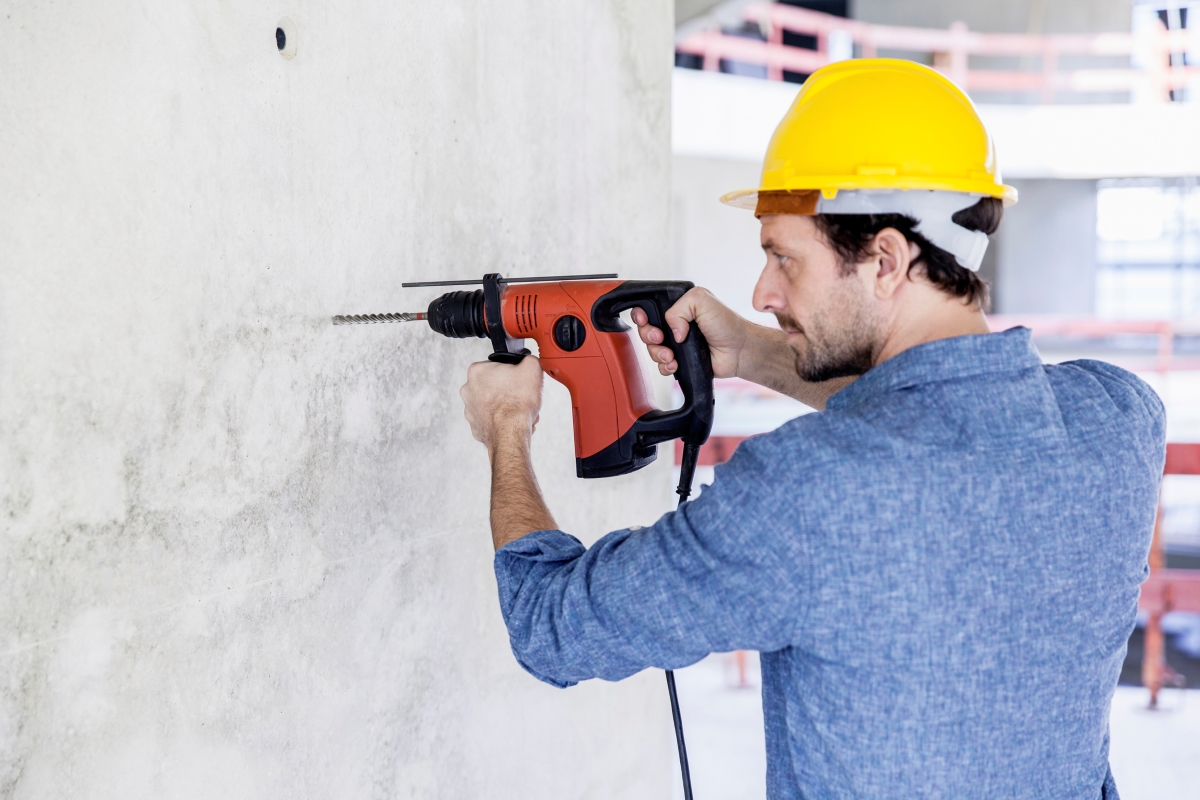

We may earn revenue from the products available on this page and participate in affiliate programs. Learn More ›
Whether you want to secure shelves in your garage, hang artwork on an interior concrete wall, or frame walls in your basement, drilling holes in concrete is possible with the right tools and bits. While there is more than one tool that can drill a hole into concrete, the best tool for the job depends on the size of hole that you need.
The tools that work best for drilling into concrete are rotary hammers and hammer drills. Rotary hammers are weighted to provide the power that’s needed to make either small holes or larger holes, and hammer drills are used to make smaller holes. If this is a rare situation and you don’t expect to need to drill into concrete often, you can rent both types of tools at a local home improvement center.
Keep reading to find out how to drill into concrete walls or floors, and learn what you need to know about selecting and using the right tool for the job so you can achieve your home improvement goals.
Tools & Materials
Bobvila.com may earn a commission from purchases made through these links.
- Protective goggles
- Ear protection
- Work gloves
- Drop cloth
- ⅞-inch rotary hammer or hammer drill for concrete
Project Overview
Working time: 5 minutes
Total time: 10 minutes
Skill level: Intermediate
Estimated cost: $100+, depending on tools on hand
Before You Begin
Before drilling into concrete, make sure to have on hand safety glasses, ear protection, and gloves to wear while working. Because it’s a dense and porous material, concrete can chip and the bit can become very hot while drilling into it. Drilling into concrete also can be very loud.
7 Steps to Drilling Through Concrete
Step 1: Choose the right tool.

There are light-duty and heavy-duty tools that can drill into concrete. Tools that are considered heavy-duty weigh more and are used for creating holes that are larger than ½ inch in diameter. For most DIYers, drilling into concrete means making small holes for setting wall anchors or for driving screws. A ⅞-inch rotary hammer or a hammer drill is designed for these applications. Choose a 1-inch rotary hammer for making larger holes.
Step 2: Choose the right bit.
Drilling into concrete also requires the right bit. Choose the appropriate tungsten carbide masonry drill bit for your desired hole size and your hammer drill or rotary hammer. Unlike wood drill bits, rotary hammer bits are fluted along the shank so they can travel up and down like a jackhammer while working through the concrete to make the hole you need.

Tried-and-True Advice
“Drilling into concrete means hard surface (concrete) meets harder surface (drill bit) with rotation force added. The result is that once the bit starts to twist it’ll “skate” off the desired hole location. The fix is easy. Once I mark the the hole location, I take my nail set…and give it a tap or two with my hammer. This creates a small hollow the bit can ride in to get started.”
—Mark Clement, Contributing Writer
Step 3: Prepare the surface and work area.
Remove any artwork from the concrete wall and any furniture that’s below the desired hole location. Place a drop cloth below to collect debris as you bore into the wall. Make sure you have ample space to drill and that you have a stable surface on which to stand.
Step 4: Mark the hole location and depth.
Mark the desired position of the holes in pencil on the concrete surface, and double-check the locations before you proceed. If your drill’s features include a stop bar, set it to the exact depth you want by following the drill manufacturer’s specifications. No stop-bar feature? Instead, wrap a piece of tape around the drill bit to show you where to stop.
Step 5: Drill a guide hole.
Put on your safety protection before you begin to drill. Then, get into position to drill by planting your feet firmly on the ground, shoulder-width apart. Hold the drill securely with both hands: Grip it in one hand like a handgun, and, if there’s no auxiliary handle for your spare hand, use that hand to brace the back of the rotary hammer or hammer drill while making a hole.
Many hammer drills offer only two speeds, so turn your drill on at the slower speed for best control when making the guide hole. If your drill has only one speed, then work in short, controlled bursts of a few seconds each until you’ve established a hole.
Step 6: Continue drilling to complete the hole.

Continue to operate the drill with a steady, light-but-firm touch so you’re never forcing it in. It’s critical to control the drill so it doesn’t run away once you begin work. When you lean in to bore the hole, the drill bit should be perfectly perpendicular to the concrete. Be prepared for some recoil from the drill’s hammer action. Concrete can have air pockets and pebbles that can make resistance unpredictable, with the result that it can be disturbingly easy to lose control of the tool for a moment.
If you’re feeling confident, turn the speed to full, keeping a firm grip on the tool with both hands, and drill into the concrete until the hole is complete. Periodically pull the drill out to brush away concrete dust. You can expect to bore a 2-inch hole in under a minute using a hammer drill, pausing every 15 to 20 seconds to clean out the debris.
Tip: If you hit obstructions, never force the drill farther into the concrete. This can damage the bits or drill, or cause you to lose control of the drill and mess up your hole, damage the concrete surface, or worse.
Step 7: Clean the work area.
Once you have drilled your hole to the necessary depth, blow all of the concrete dust out of the hole with a can of compressed air. Then vacuum up whatever has fallen to the ground. You should still be wearing your goggles throughout this process to protect against any concrete dust and shards that might fly in your face and scratch your eyes.
When to Call a Professional for Concrete Drilling

Drilling into concrete isn’t a DIY task for beginners. If you’ve read this guide on how to drill through concrete and don’t feel confident or comfortable using a hammer drill or rotary hammer, or if you don’t feel like you are strong enough to power through and bore a hole with the tool, it might be best to ask a professional to complete the project for you. Other reasons why you may want to call a professional include:
- You don’t want to buy or rent a rotary hammer and buy the bits.
- You aren’t making any progress or you are burning up your bits.
- You need to drill into concrete from a ladder, and aren’t comfortable doing so.
FAQs
No. You can’t use a regular drill for concrete. Choose a hammer drill or a rotary hammer. They have impact energy in addition to rotational energy. The impact energy pulverizes the concrete at the tip of the bit while the rotational energy draws the dust out of the hole through the bit’s flutes.
There isn’t a trick to drilling into concrete. It’s important to use the right tools—rotary hammer or hammer drill—and the right bits that are made for concrete.
No, you need to drill a pilot hole into the concrete before driving a screw that’s rated for concrete like Spax #10 multi-material screw into the hole.
If you drill too close to the edge of a concrete surface, it can crack.
